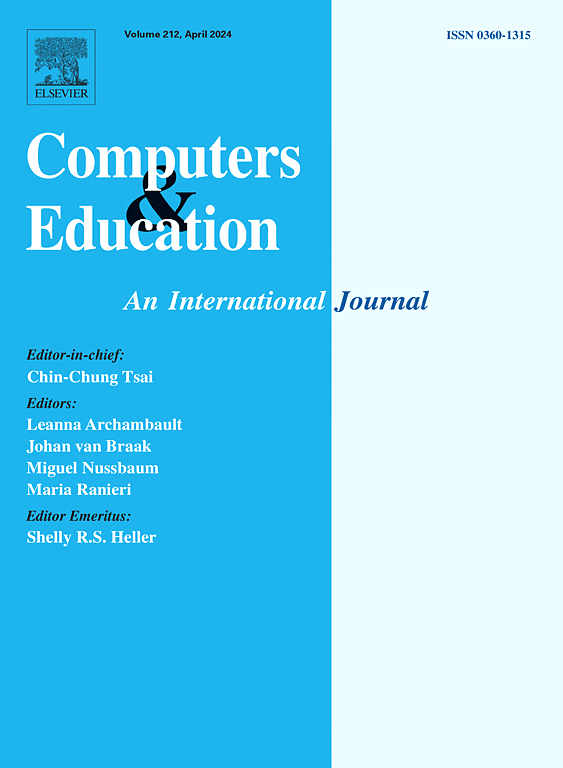“Storytelling and educational robotics: A scoping review (2004–2024)”
IF 8.9
1区 教育学
Q1 COMPUTER SCIENCE, INTERDISCIPLINARY APPLICATIONS
引用次数: 0
Abstract
Storytelling has been used for years in educational practice and Educational Robotics is a rapidly growing field worldwide. Accordingly, researchers have attempted to combine Storytelling and Robotics in education. However, no systematic record exists on this combination. Therefore, we conducted a scoping review of 82 papers out of 5272 articles published in 5 Databases in the last 20 years to map the conducted research so far. In detail: the educational levels and the school subjects in which storytelling and educational robotics are applied, the types of robots used, the duration, the sample size, participants' age and the skills that students may develop through this combination. Additionally, we analyzed, grouped, and presented the tools used for measuring the potential effects of storytelling and educational robotics. Finally, the students' role in the activities was sought. Based on our findings, most interventions mainly addressed preschool and primary school students, the robots used the most are humanoid, most interventions did not exceed 6 h, and the number of participants was less than 20 students. Besides, most interventions tried to develop students’ skills (communication, creativity, collaboration) and attitudes (engagement, motivation, participation) with qualitative tools borrowed from other domains (e.g. psychology, healthcare). This scoping demonstrates a gap in the use of storytelling and educational robotics in secondary and university education and subjects like history, geography, etc. Finally, this combination seems to have the potential to enhance the educational process, but more research is needed to shed light on all the aspects of the combination.
"讲故事和教育机器人:范围审查(2004-2024 年)"
多年来,讲故事一直被用于教育实践,而教育机器人技术则是全球迅速发展的一个领域。因此,研究人员尝试将讲故事和机器人技术结合起来用于教育。然而,目前还没有关于这种结合的系统记录。因此,我们对过去 20 年中在 5 个数据库中发表的 5272 篇文章中的 82 篇进行了范围审查,以了解迄今为止所开展的研究。详细内容包括:应用讲故事和教育机器人技术的教育水平和学校科目、使用的机器人类型、持续时间、样本大小、参与者年龄以及学生通过这种组合可能发展的技能。此外,我们还对用于衡量讲故事和教育机器人潜在效果的工具进行了分析、分组和介绍。最后,我们还探讨了学生在活动中的作用。根据我们的研究结果,大多数干预措施主要针对学龄前儿童和小学生,使用最多的机器人是仿人机器人,大多数干预措施的时间不超过 6 小时,参与人数少于 20 人。此外,大多数干预措施都试图通过借鉴其他领域(如心理学、医疗保健)的定性工具来培养学生的技能(沟通、创造力、协作)和态度(参与、激励、参与)。这一范围界定表明,在中学和大学教育以及历史、地理等学科中使用讲故事和教育机器人技术还存在差距。最后,这种结合似乎有可能加强教育过程,但还需要更多的研究来阐明这种结合的各个方面。
本文章由计算机程序翻译,如有差异,请以英文原文为准。
求助全文
约1分钟内获得全文
求助全文
来源期刊

Computers & Education
工程技术-计算机:跨学科应用
CiteScore
27.10
自引率
5.80%
发文量
204
审稿时长
42 days
期刊介绍:
Computers & Education seeks to advance understanding of how digital technology can improve education by publishing high-quality research that expands both theory and practice. The journal welcomes research papers exploring the pedagogical applications of digital technology, with a focus broad enough to appeal to the wider education community.
 求助内容:
求助内容: 应助结果提醒方式:
应助结果提醒方式:


